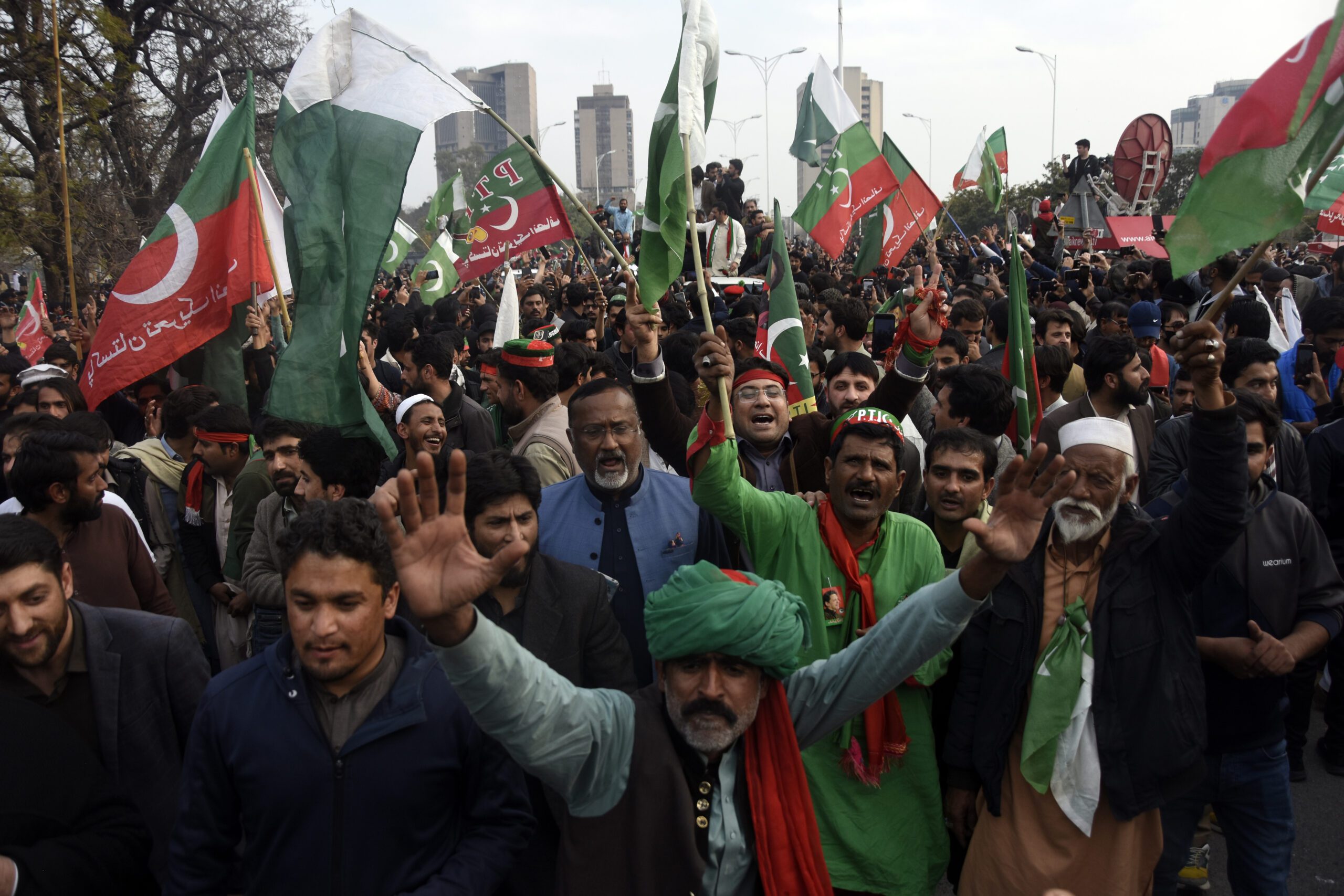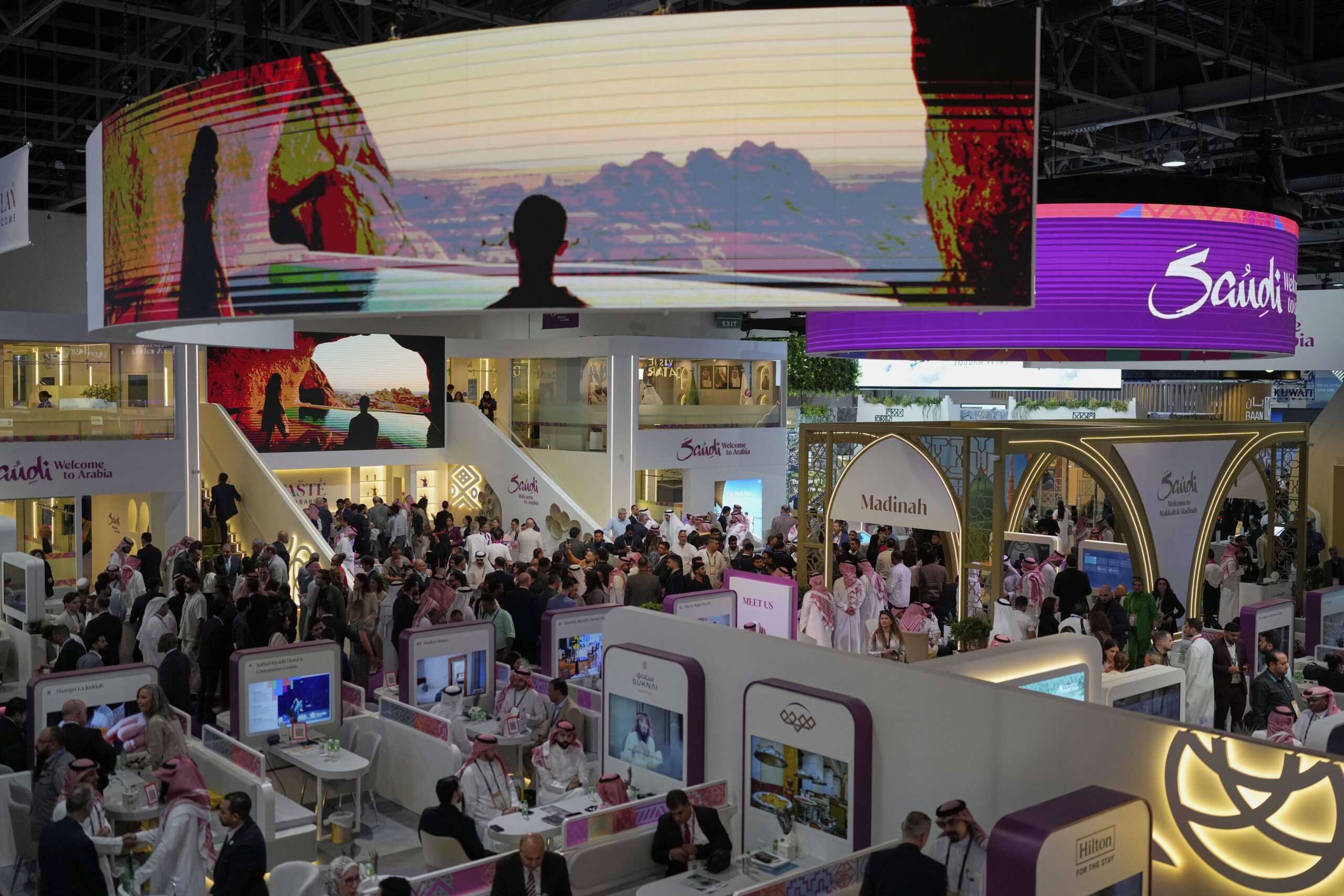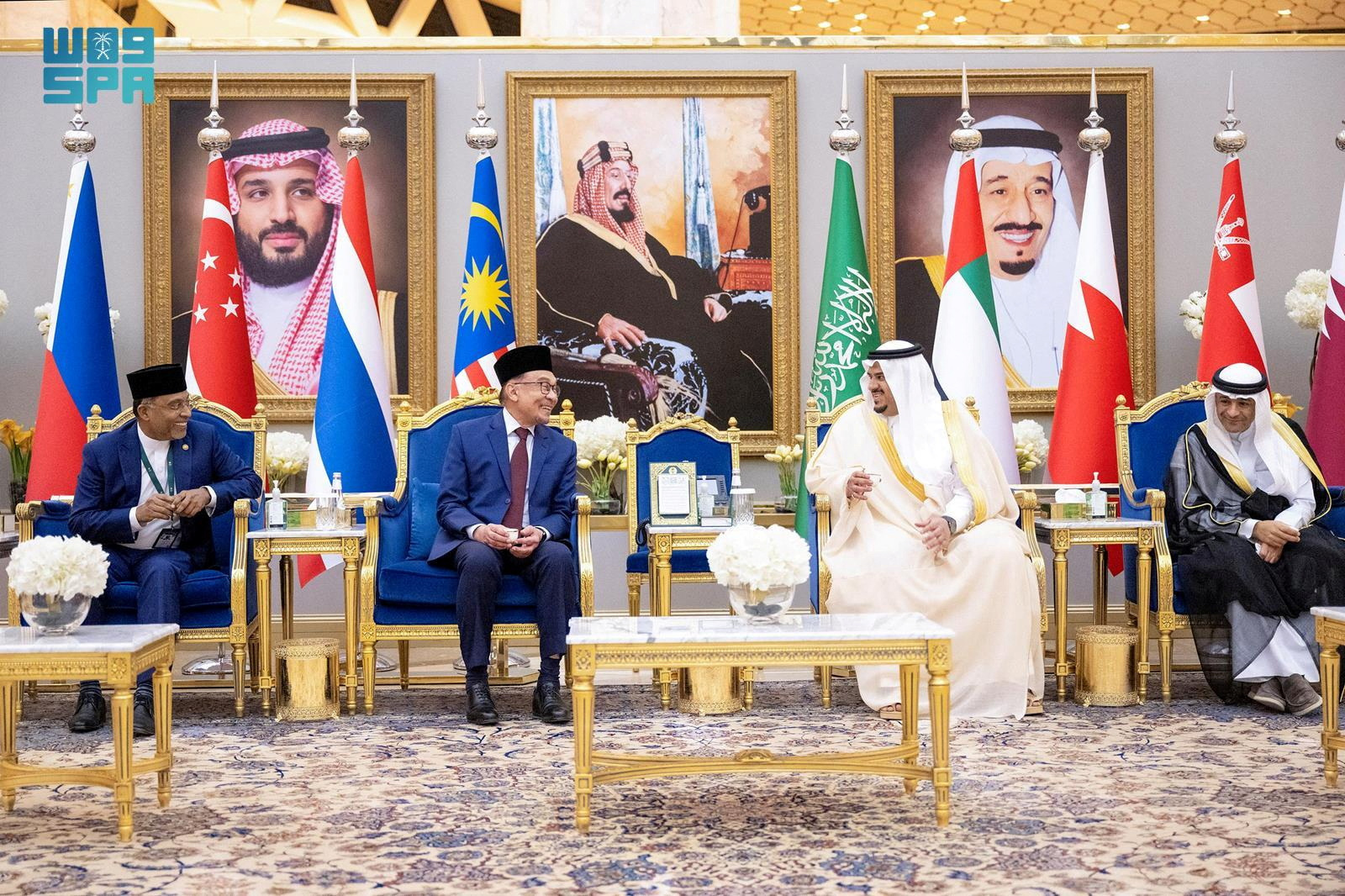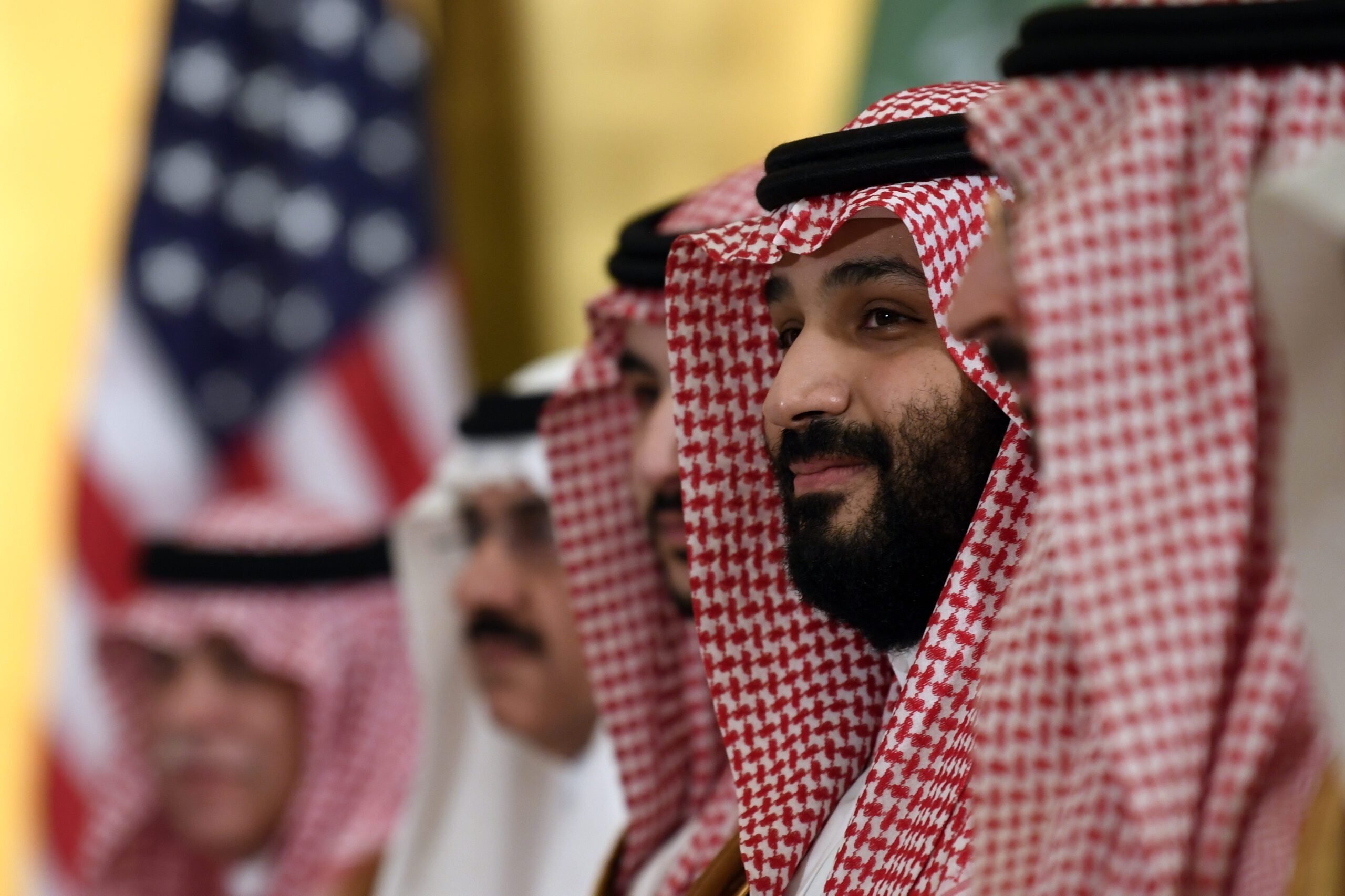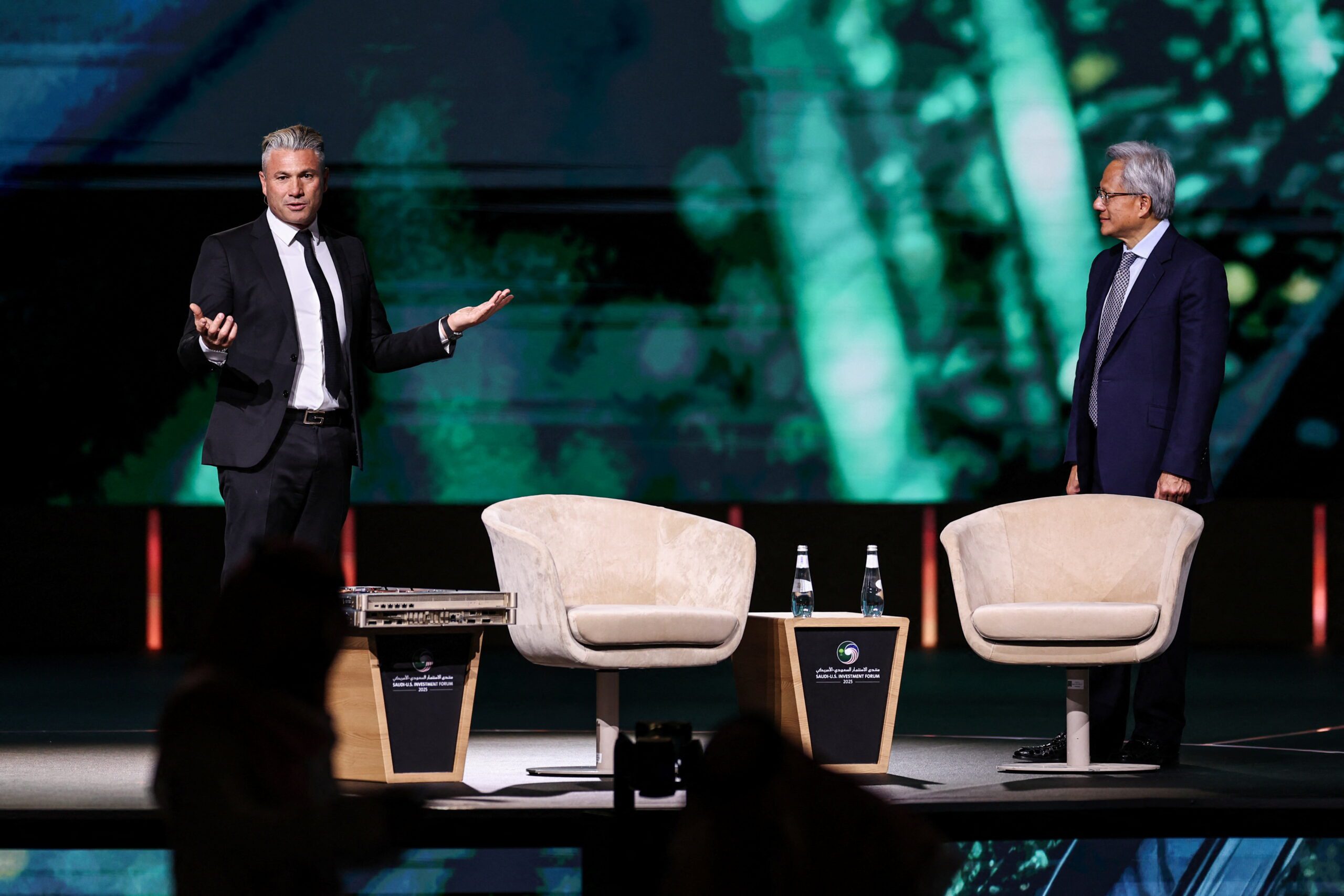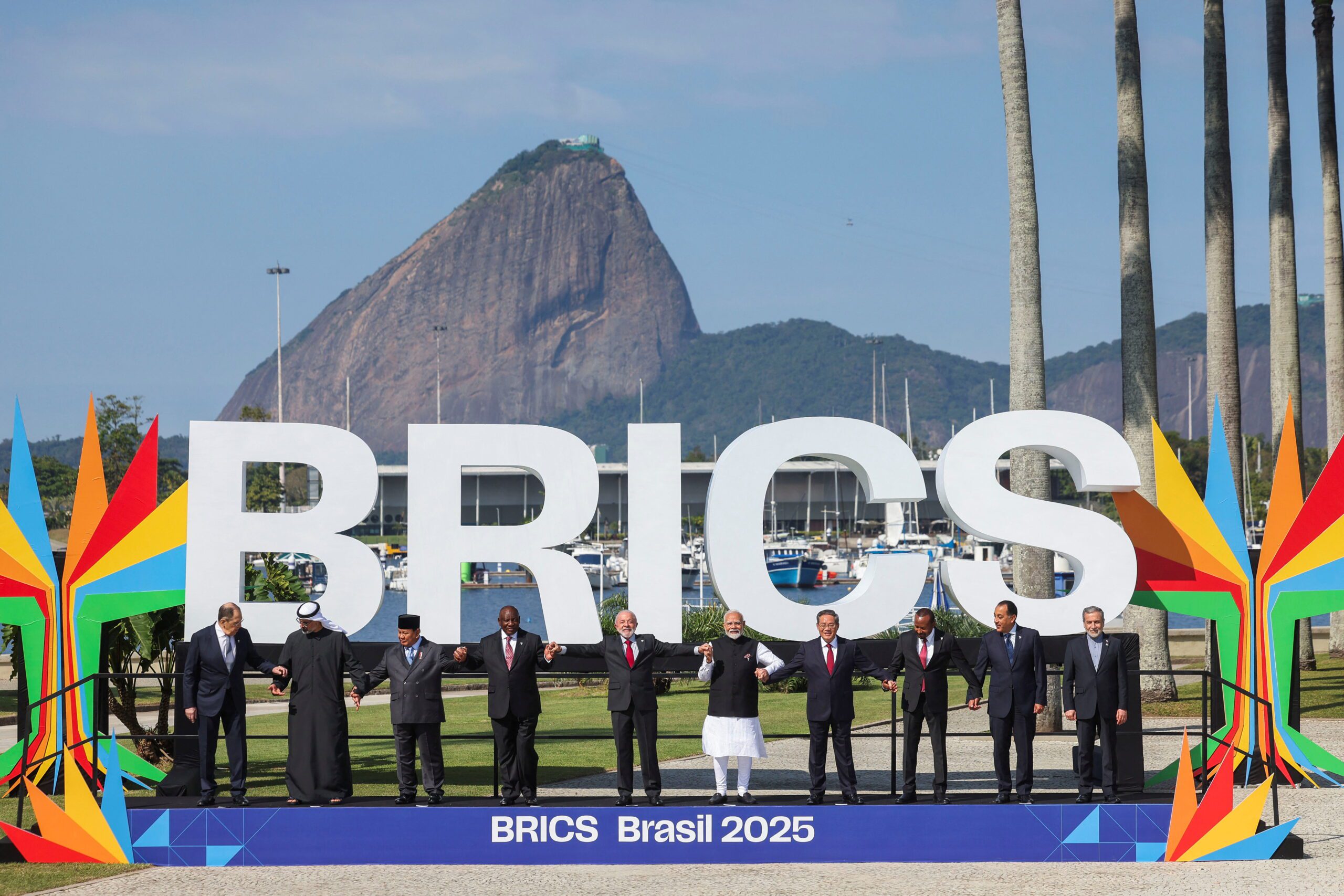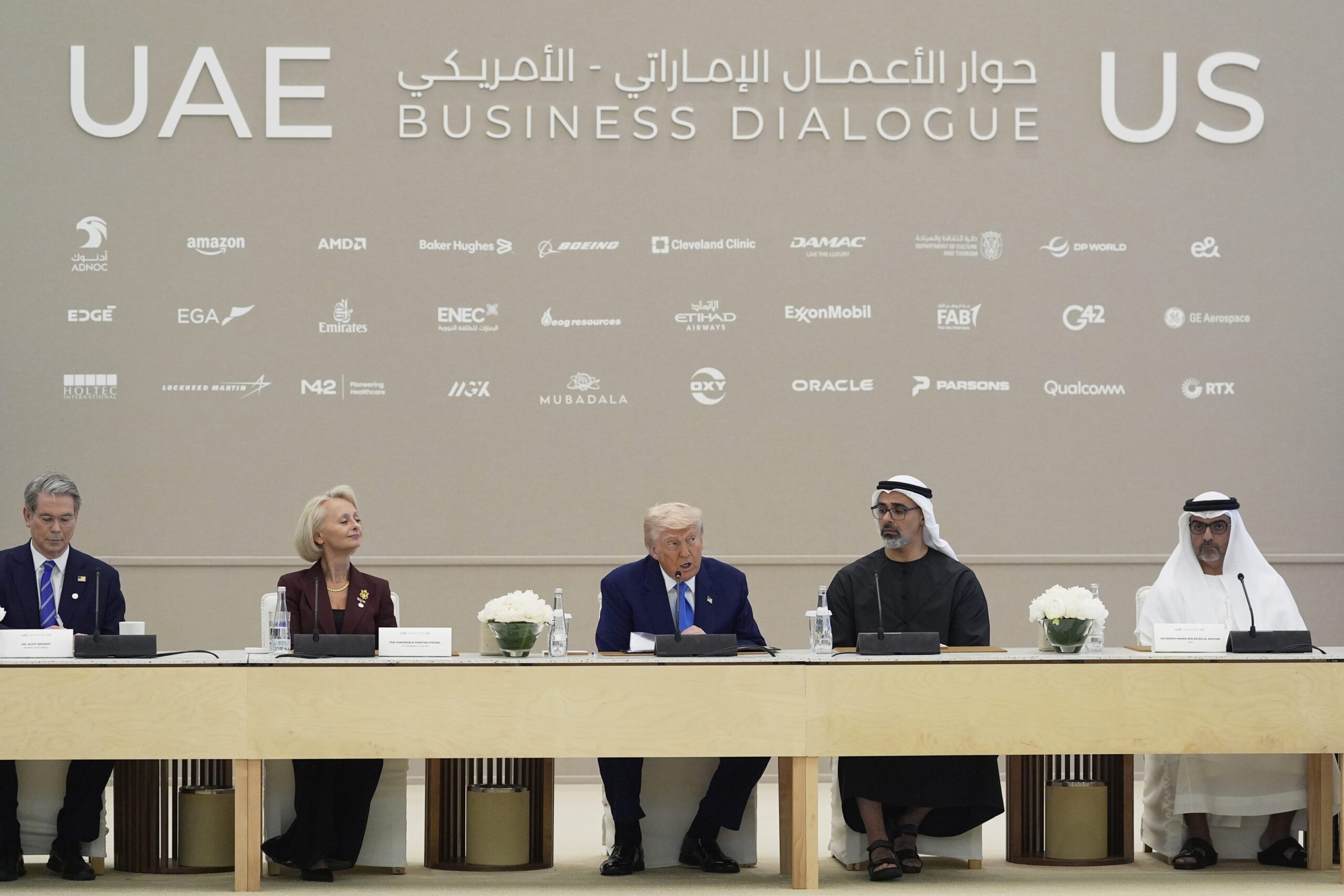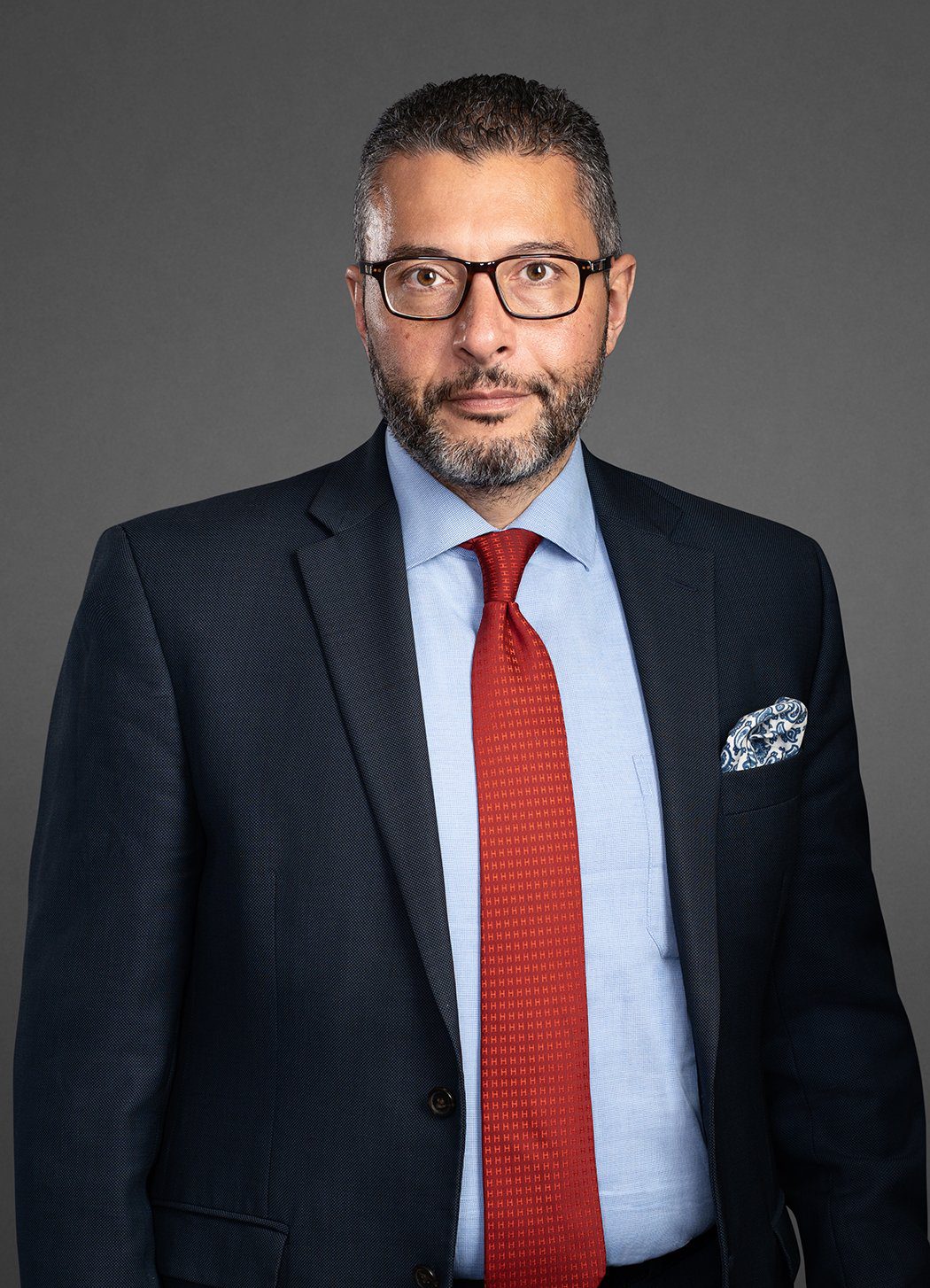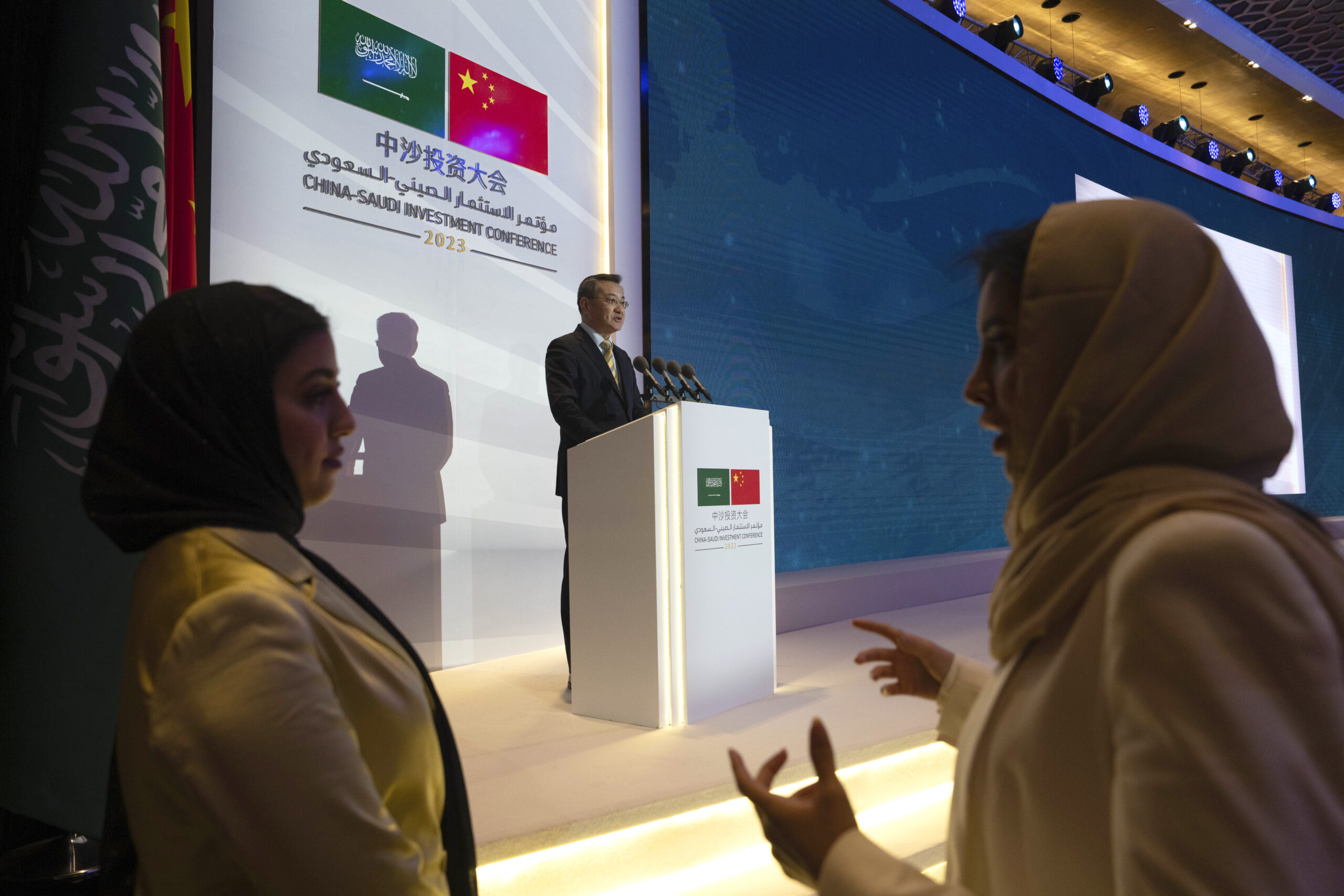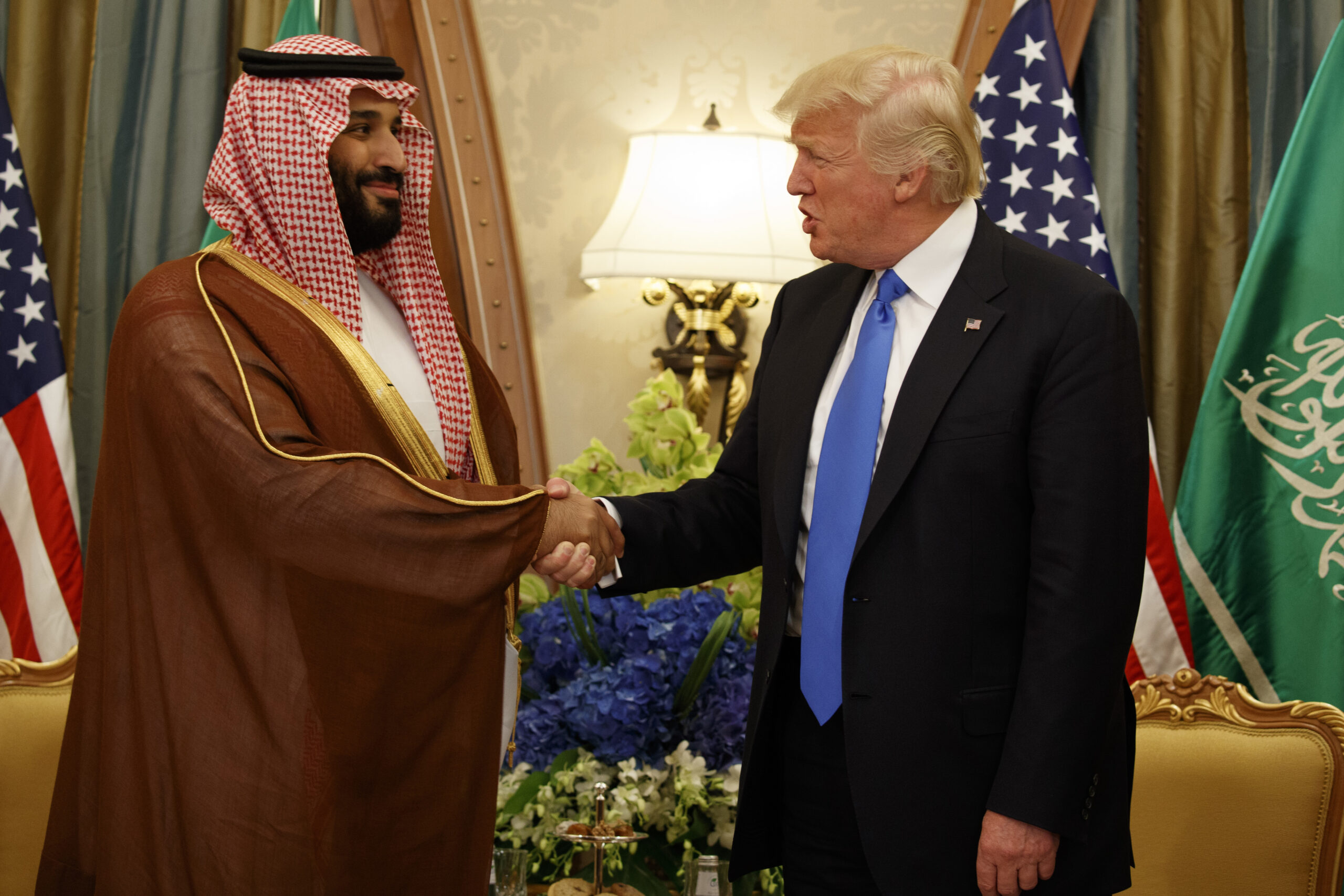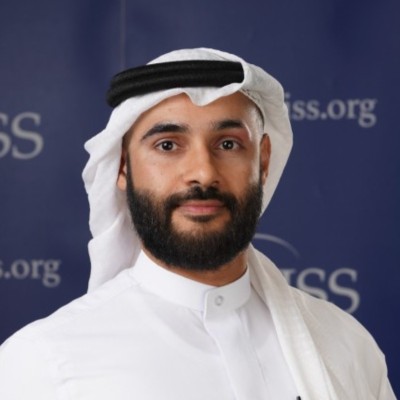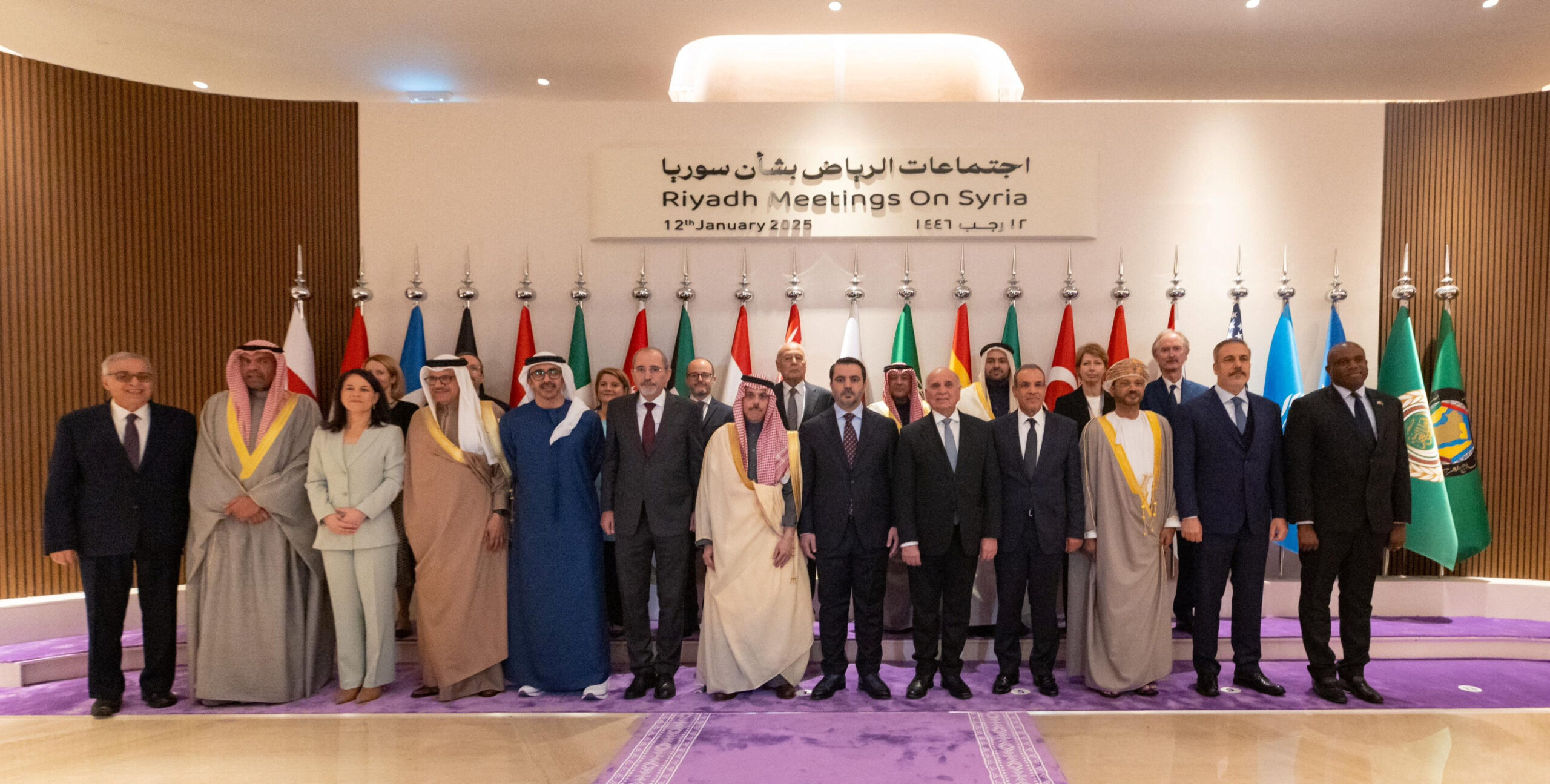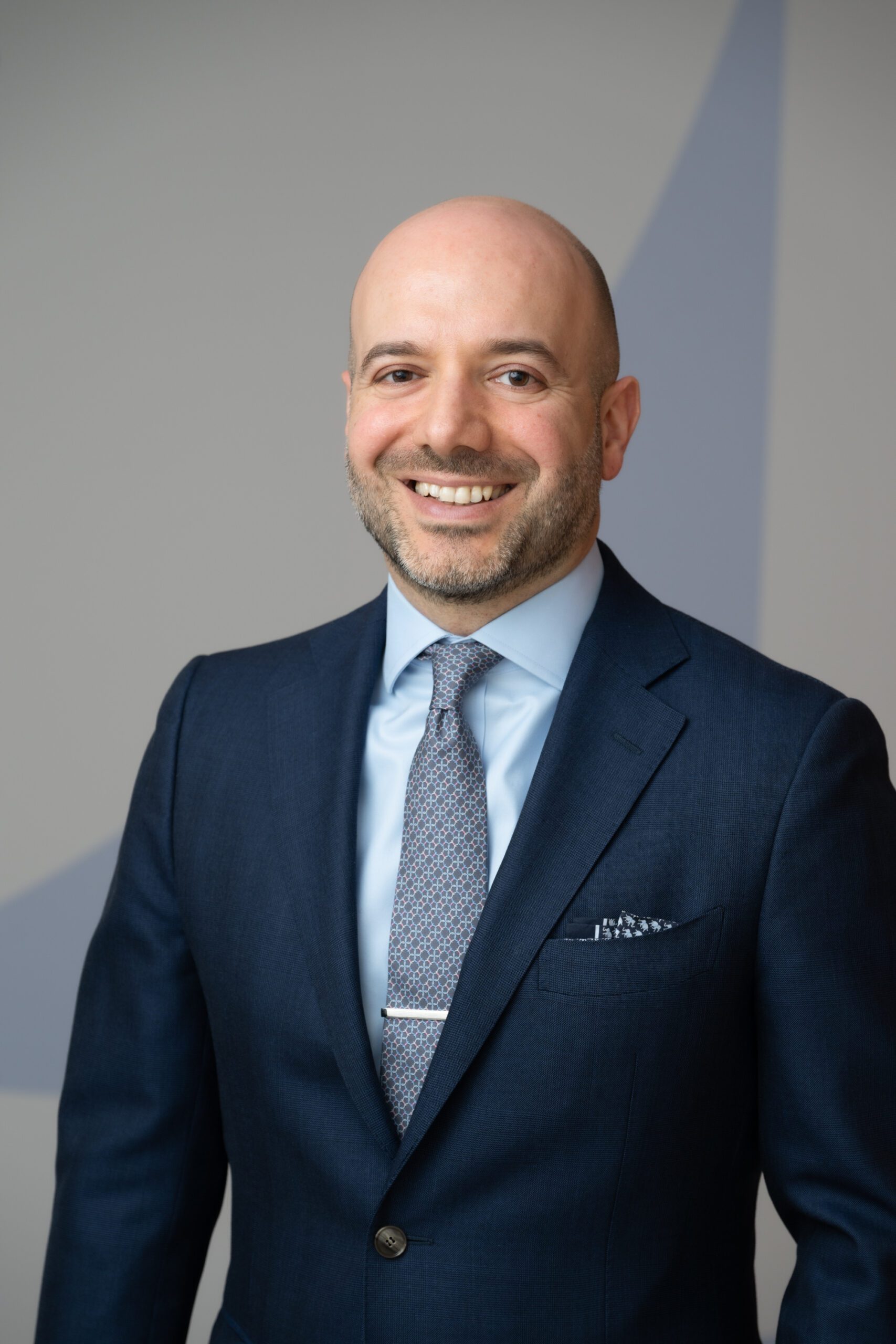Saudi-Indian Ties Poised for Cautious Growth
For Riyadh, developing stronger ties with India could yield sought-after economic dividends, but it comes with a mixed bag of regional and international implications.
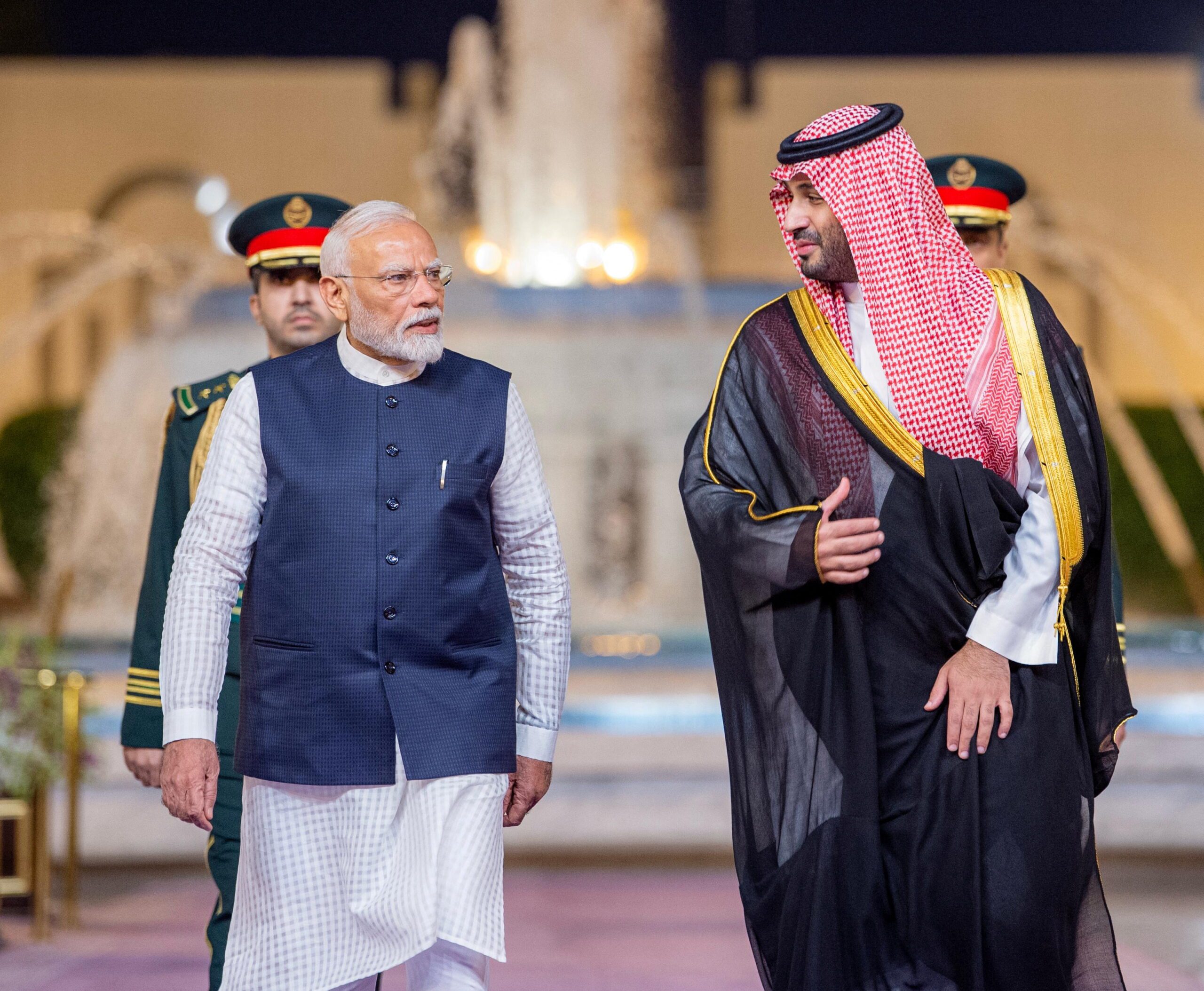
Relations between two economic juggernauts – Saudi Arabia and India – may be on the upswing. Indian authorities granted the Saudi Public Investment Fund exemptions from restrictive foreign portfolio investment rules, potentially facilitating greater Saudi investments into India, and are reportedly considering additional tax incentives linked to infrastructure and energy investments. Indian Prime Minister Narendra Modi visited Riyadh in April and described the Saudi-Indian partnership as having “limitless potential.”
Flowery political rhetoric does not necessarily translate into deeper ties but can signal an alignment of interests. According to scholar Jonathan Fulton, broader India-Gulf relations “are muted – but mobilizing.” India may not be Saudi Arabia’s most important economic partner, but the Saudi-Indian economic relationship has substantial room to grow. As Saudi Arabia seeks to fuel economic growth at home and capitalize on investment opportunities abroad, the untapped potential in Saudi-Indian ties is likely to become a greater focus of Riyadh’s global economic engagement strategy.
Building Momentum in Ties
Saudi and Indian government officials appear keen to accelerate growing ties. The two governments established a Strategic Partnership Council in 2019. Saudi Crown Prince Mohammed bin Salman and Modi then agreed in 2023 to create the High-Level Task Force on Investment. This special body, created to facilitate more bilateral investments, met for the first time in July 2024. Saudi authorities expected the volume of investment and trade exchange to reach $100 billion between 2023 and 2025.
Actual investment flows have been slower to materialize. Indian authorities estimated the stock of Indian investments in Saudi Arabia at $3 billion as of August 2023. In 2019, the PIF signed a memorandum of understanding with OYO, the Indian hospitality company. OYO’s premium hotel brand, Sunday, opened its first hotel, a 72-room property, in Jeddah in 2024. Around 40 Indian companies had set up their regional headquarters in Saudi Arabia by April 2025, supporting the Saudi initiative to encourage multinational corporations to establish their regional headquarters in the kingdom, and additional defense firms are expected to set up facilities soon.
Meanwhile, cumulative Saudi investments in India are estimated at $10 billion, including investments by the Saudi-backed SoftBank Vision Fund. The PIF has acquired minority stakes in Indian conglomerates, namely Reliance’s Jio Platforms (for $1.5 billion) and Reliance’s Retail Ventures ($1.3 billion). There are other smaller investments across the agriculture, food, wind, and solar industries. India’s renewable energy targets present an opportunity for Saudi businesses, according to the India-Saudi Arabia Business Council.
Indian refining and petrochemical industries are high-priority investment areas for major Saudi firms. Saudi Aramco is in talks regarding investing in two Indian refinery projects, though similar deals have fallen apart in the past. SABIC has been operating in India for three decades. The Saudi petrochemical giant oversees a manufacturing site in Gujarat, a research and technology center in Bengaluru, and a corporate office in Delhi. India’s oil minister expects $87 billion in investments from various sources over the next decade to help meet the country’s rising demand for petrochemicals.
India is a notoriously difficult investment environment, but the Indian government has sought to catalyze investments and reduce investment barriers. In 2015, Indian government officials established the National Investment and Infrastructure Fund to drive growth sectors in India, and Dubai-based DP World and the Abu Dhabi Investment Authority are already among the fund’s partners and investors.
Trade Flows and New Cooperation Frontiers
Trade flows between Saudi Arabia and India have a strong energy focus. In 2023, Saudi exports to India reached $34.8 billion, with crude oil (68%) and natural gas (6.6%) the top exports. The heavy concentration of hydrocarbon commodities in Saudi-Indian trade relations means that oil prices have played an outsized role in the value of Saudi exports. In 2013, the value of Saudi exports, of which crude oil constituted around 84%, was higher than that of 2023 ($37.2 billion versus $34.8 billion), when crude oil accounted for 68% of the value of total exports.
The value of Saudi Arabia’s imports from India has grown steadily in recent years, from $5.5 billion in 2018 to $11.3 billion in 2023. Cars (11.5%) and rice (11.4%) were India’s top exported goods in 2023. Bilateral trade, which was $46.1 billion in 2023, nevertheless lags behind that of the United Arab Emirates and India, which reached $69.5 billion over the same period.
Bilateral investment and trade flows reveal sectoral complementary in energy, but tourism and technology are growing priority areas of collaboration too. Saudi Arabia welcomed 1.5 million inbound Indian travelers in 2023 – a 50% increase over 2022. The Saudi Tourism Authority aims to reach 7.5 million Indian tourists by 2030 and expects India to become the top inbound tourism market. Technology cooperation is more nascent but featured in the joint statement from Modi’s April visit to Saudi Arabia, which highlighted the importance of cooperation in artificial intelligence, cybersecurity, and semiconductors.
Transregional initiatives and country groupings, such as the India-Middle East-Europe Economic Corridor and BRICS, offer additional alignment potential between Saudi Arabia and India. These two avenues of multilateral cooperation have been slow to gain traction – for different reasons. Conflict in the Middle East and a diversity of actors and interests have made it difficult for IMEC to transition beyond the conceptual stages. The 2024 election manifesto of the ruling Bharatiya Janata Party nevertheless included a commitment to develop IMEC. Moreover, this ambitious connectivity initiative includes plans for more green energy and electricity cooperation, and Saudi firms are keen to enter India’s green hydrogen market.
Riyadh received an invitation to join BRICS and sends officials to meetings, but the Saudis have not formally joined the bloc, unlike the UAE. Saudi Arabia remains concerned over how Chinese influence in the bloc may affect the kingdom’s relations with Washington. The Saudi deferment on joining limits official avenues for Saudi-Indian collaboration through this forum for now.
Managing Diplomatic Tensions
The UAE, not Saudi Arabia, is India’s strongest economic partner in the Gulf. There are deep and established investment, trade, and socioeconomic links between the two countries. The Abu Dhabi Investment Authority is a key investment partner for Delhi. A comprehensive economic partnership agreement between the UAE and India came into force in 2022, bolstering trading relations. Wealthy Indians flock to the UAE, consistently contributing to the net inflows of high-net-worth individuals to the country, which welcomed an estimated 6,700 high-net-worth individuals with liquid investable wealth of at least $1 million in 2024.
Riyadh would like to attract more of these two-way flows of investment, trade, and high-net-worth individuals. There are approximately 2.7 million Indians in Saudi Arabia, but Saudi officials would like to welcome more skilled professionals and wealthy individuals as residents as well as visitors. India is a key source of wealth migration and was the world’s third-largest loser of millionaires in 2024, according to research by Henley & Partners, which estimated that 4,300 Indian millionaires left the country that year. Another 3,500 Indian millionaires with an estimated wealth of $26.2 billion are expected to leave India in 2025.
Past Saudi economic policymaking, such as the regional headquarters program and stricter enforcement of customs fees related to intraregional free zone trade, have fueled the perception that Riyadh is trying to cut into the Emiratis’ economic pie. As Saudi Arabia takes steps to grow its share of India’s economic engagement with the Gulf region, there will likely be more competitive friction with the UAE. Saudi ambitions across logistics, aviation, and tourism are bound to intersect with Emirati-Indian relations.
Meanwhile, Saudi Arabia’s strong relations – and deep security partnership – with Pakistan requires delicate balancing if the kingdom wants to make strides in growing economic ties with India. In May, conflict once again flared between the nuclear-armed rivals Pakistan and India. Saudi and other Gulf officials sought to mediate the conflict and have engaged diplomatically during past rounds of escalation.
Great power competition has likewise presented a challenging diplomatic balancing act for Gulf states, including Saudi Arabia, which hope to maintain positive working relations with Washington. Saudi efforts to cultivate deeper ties with India comes with fewer risks than doubling down on relations with China, the dominant economic player in Asia. Amid this mixed bag of regional and international implications, Riyadh will continue to pursue deeper economic ties with India and new investment and cooperation opportunities. Progress is likely to be slow and steady.
The views represented herein are the author's or speaker's own and do not necessarily reflect the views of AGSI, its staff, or its board of directors.


